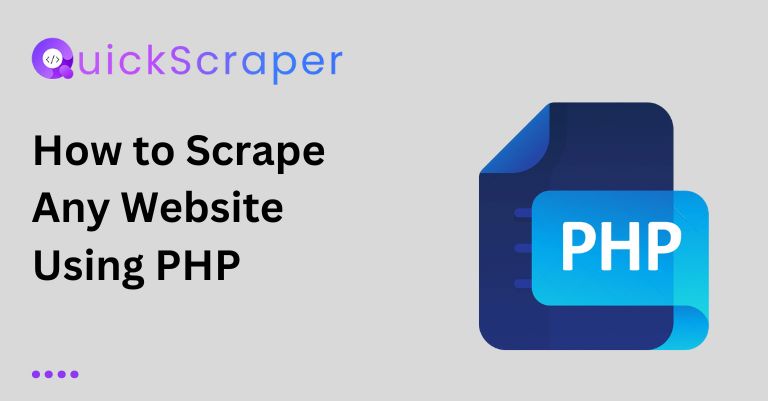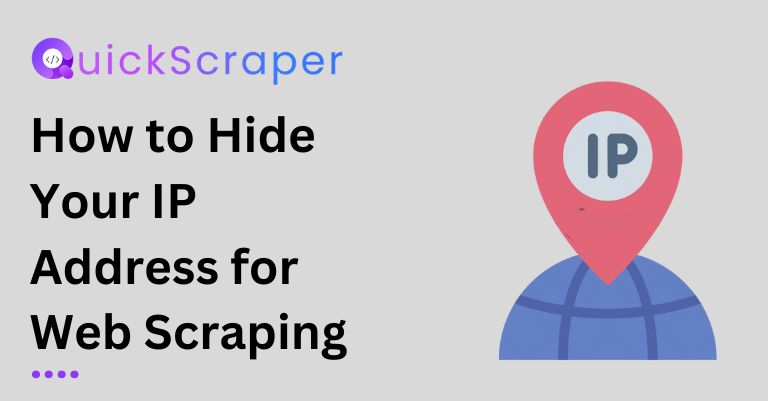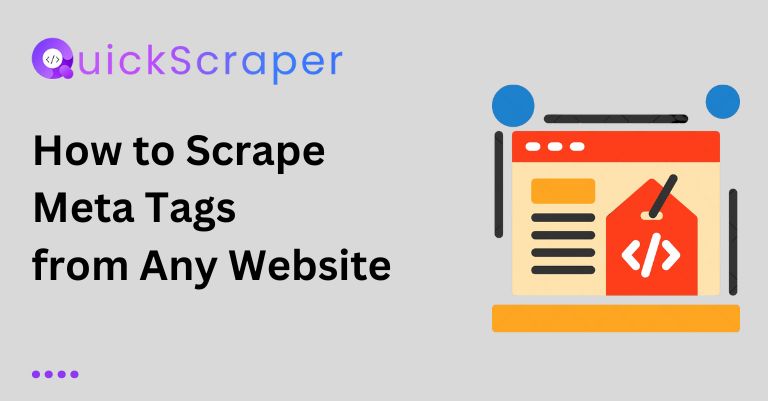
How to Scrape Any Website Using PHP
How to Scrape Any Website Using PHP Do you hate manually copying and pasting data from websites? With web scraping, you can automate the process

Web scraping is a valuable tool for gathering data from websites, but it’s crucial to approach it ethically and responsibly. One effective way to stay under the radar is by masking your IP address. This prevents target sites from detecting and blocking your scraping activities.
In this blog post, we’ll explore how to conceal your IP using QuickScraper, a service offering a pool of proxy servers. With QuickScraper, you can route your web requests through different IP addresses, keeping your real identity hidden. Let’s dive into the details and learn how to leverage this tool for ethical web scraping.
First, you’ll need to sign up for a QuickScraper account. Once you’ve created an account, you can generate an access token. This token will be used to authenticate your requests to the QuickScraper API.
For this tutorial, we’ll be using Python and the following libraries:
requests: This library will be used to make HTTP requests to the QuickScraper API.BeautifulSoup: We’ll use this library to parse the HTML response from the API.You can install these libraries using pip:
pip install requests beautifulsoup4
Here’s the Python code that we’ll be using:
import requests
from bs4 import BeautifulSoup
access_token = 'L5vCM4n13B7pIJZYNh' # Replace with your access token
url = f"<https://api.quickscraper.co/parse?access_token={access_token}&url=http://ip-api.com/json>"
response = requests.get(url)
soup = BeautifulSoup(response.text, 'html.parser')
print(soup)
Let’s break down this code:
requests and BeautifulSoup.ip-api.com website to test our new IP address.requests.get method.BeautifulSoup.Save the code in a Python file (e.g., hide_ip.py) and run it using the following command:
python hide_ip.py
You should see an output similar to the following:
{
"status": "success",
"country": "United States",
"countryCode": "US",
"region": "NC",
"regionName": "North Carolina",
"city": "Charlotte",
"zip": "28208",
"lat": 35.2218,
"lon": -80.9213,
"timezone": "America/New_York",
"isp": "Charlotte Collocation",
"org": "tw telecom holdings",
"as": "AS11402 Charlotte Colocation Center, LLc",
"query": "66.195.198.17"
}
This output shows the details of your new IP address provided by the QuickScraper proxy server.
Now that you know how to hide your IP address using QuickScraper, you can integrate this code with your web scraping script. Simply replace the target URL in the url variable with the website you want to scrape.
url = f"<https://api.quickscraper.co/parse?access_token={access_token}&url=https://www.example.com>"
By using QuickScraper’s proxy servers, your web scraping requests will appear to be coming from different IP addresses, making it harder for the target website to detect and block your activities.
Remember, it’s essential to respect the terms of service and robot.txt files of the websites you’re scraping. Always scrape responsibly and ethically.
That’s it! You now know how to hide your IP address for web scraping using QuickScraper. Happy scraping!

How to Scrape Any Website Using PHP Do you hate manually copying and pasting data from websites? With web scraping, you can automate the process

How to Scrape Meta Tags from Any Website Meta tags are snippets of text that describe a website’s content, and search engines use them to

How to Scrape Images from Any Website Scraping images from websites can be a useful technique for various purposes, such as creating image datasets, backing

How to Scrape a Website Without Getting Blocked: A Developer’s Guide Web scraping, as a powerful tool, is beneficial for developers, giving them the power

How To Scrape Yelp Data using Python Web scraping is the process of extracting data from websites automatically. In this blog post, we’ll learn

How to Scrape Stock Prices Every Day using Python In this blog post, we will learn how to scrape stock prices from a financial website
By clicking “Accept”, you agree Quickscraper can store cookies on your device and disclose information in accordance with our Cookie Policy. For more information, Contact us.